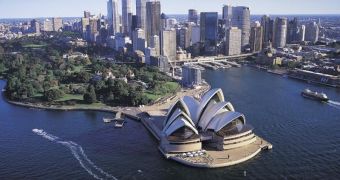A team of researchers working with the ARC Center of Excellence for Climate System Science maintain that, according to their investigations, people living in Sydney, Australia will most likely be hit by global warming harder than those inhabiting other regions.
More precisely, they say that local average temperatures in Sydney's suburbs will up by as much as 3.7 degrees Celsius (38.66 degrees Fahrenheit) by the year 2050.
This increase in local temperatures will not be caused by climate change alone, although this ongoing phenomenon will have a definite say in the matter.
As explained on the official website for the ARC Center of Excellence for Climate System Science, Sydney will only get hotter in the years to come due to both global warming and a so-called urban heat island effect.
Said effect refers to the fact that urban structures store and eventually release more heat that the earth does, meaning that the more developed a city is, the higher local temperatures are bound to be.
Interestingly enough, this urban heat island effect typically causes nighttime temperatures to exceed those recorded during the day, seeing how the heat stored by buildings throughout the day is released during the night.
“This has implications for health problems related to heat stress accumulation and at an economic level where the higher energy consumption needed to power air conditioning overnight may lead to higher power bills,” study lead author Dr. Daniel Argueso wished to emphasize.
The researchers recommend that urban planners and architects make sure that whatever suburbs are built in Sydney over the following years have green spaces, trees and bodies of water incorporated in their design.
“Current research shows that along with other strategies green spaces, street trees and bodies of water can have a marked effect on reducing urban heat island effect,” Dr. Paul Osmond explained.
“Not only do these help keep suburbs cooler, there is also a knock-on effect where these places gain social advantages through additional amenities and recreational areas,” he added.

 14 DAY TRIAL //
14 DAY TRIAL //